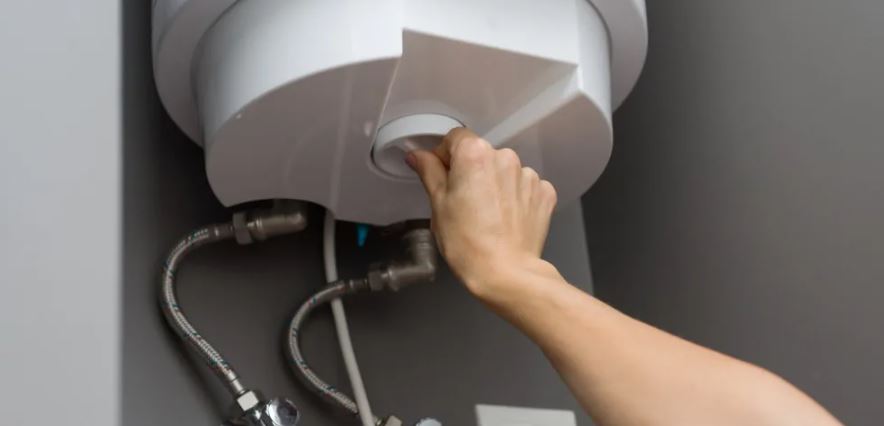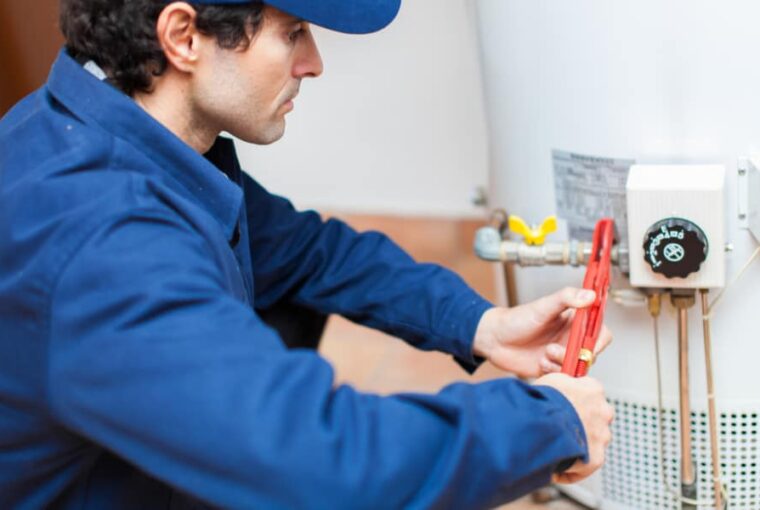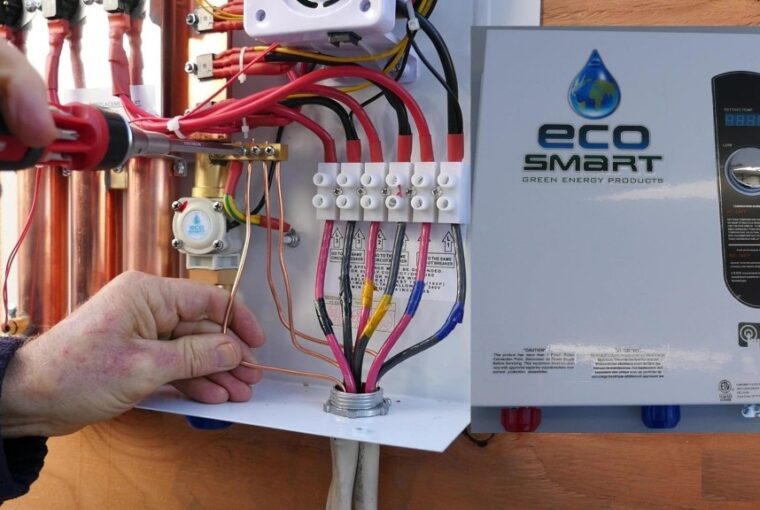It does not take a genius to figure out that extremely hot water temperatures can burn your skin and scalp. Children, infants, and newborns are at the most risk of getting affected by hot water. If you are adjusting your Rinnai tankless water heater temperature settings and you set the thermostat at a really high value, then you must re-evaluate the settings.
To help you out, this article will guide you on how to adjust the temperature on Rinnai tankless water heater. Stay tuned.
How to Adjust The Temperature on Rinnai Tankless Water Heater?
No matter what water heater model of Rinnai you are using at your home, the basics of adjusting the temperature settings remain the same. Here is how you can do it:
- If your tankless water heater is switched off, turn it on using the power button. Set the priority settings of your heater for the time when hot water is not being used in your home.
- Keep tapping the ‘Priority’ button present on the water heater’s thermostat until a green blinking light appears. This light is a positive indicator that your water heater is functioning at an optimum level and heating the water to the set thermostat value.
- Then use the up and down buttons on the thermostat to set the temperature value that you want. The digital display will show you the real-time adjustment. The water in the sources connected to the heater will be heated at the set temperature until you decide to change the thermostat settings again.
The Dangers of Using Extremely Hot Water
You may be finding this out for the first time that it does not take burning temperatures to cause skin burns. The following temperature settings can result in severe first-degree burns:
- Using 140F degrees hot water for three seconds or more
- Using 120F degrees hot water for eight minutes or more
- Using 130F degrees hot water for twenty seconds or more
Hence, you must never compromise on your and your children’s safety when it comes to water heater temperatures. Before you put your baby into the bathtub, test the temperature of the water by first dipping your own finger.
At the same time, never leave your baby unattended in the bathtub with a hot water supply on even if it is at a moderate temperature. It is important to verify the water temperature before bathing your children.
Key points to remember
There are certain important things you must keep in mind regarding your Rinnai tankless water heater temperature settings:
- If your water heater unit is generating hot water, at that moment you can adjust the temperature to only 98F and 110F degrees or in between.
- If the Rinnai tankless water heater is being used in a commercial setting, then you must take a look at the advised codes for setting the temperature value. You may not be allowed to set it to 120F that you normally would for residential use.
- If you are using a Rinnai water heater unit that is operated by remote control, then remember that if the water heater is not used for at least six hours, the default settings will be applied set at 104F degrees.
- The distance of the heating source and the faucets or taps will determine the exact water temperature that you will get. If this distance is more, then you can solve the issue by installing circulating pipes that prevent water from dissipating the heat.
- If you are using a mixer or more than one tap simultaneously then the water heater may not provide the water at the set temperature value.
Frequently Asked Questions:
What temperature should a water heater be set at?
It is recommended by professionals that you keep the temperature of your water heater to at least 120 degrees. This is an ideal temperature to kill all the pathogens inside that can otherwise cause infections and do not cause scalding at the same time. 120 degrees is also ideal to support a small family that has infants. This temperature will also keep your energy bills to an affordable value every month.
How to turn up the temperature on the water heater?
The exact method of adjusting the water heater’s temperature will be determined by its make and model. However, the basics of changing the temperatures on all water heaters are pretty much the same.
The latest gas and electric water heaters now come with an installed thermostat at the back. However, the electric water heaters have two different thermostats, one at the bottom, and the other on the top front. These thermostats have a digital display that will show the current temperature and other controls.
What is the maximum temperature for a hot water heater?
There are two types of water temperature instructions that come with every residential water heater; one is the optimum temperature for daily use and the other is the maximum temperature. Generally, it is advised by experts that the maximum temperature of the water heater should be kept no more than 120 degrees Fahrenheit. Water temperatures above 120 degrees Fahrenheit are considered dangerous especially for infants and can cause skin burns.
How to lower the water heater temperature?
The exact method of adjusting the water heater’s temperature will be determined by its make and model. However, the basics of changing the temperatures on all water heaters are pretty much the same.
The latest gas and electric water heaters now come with an installed thermostat at the back. However, the electric water heaters have two different thermostats, one at the bottom, and the other on the top front. These thermostats have a digital display that will show the current temperature and other controls that you can use to lower the temperature.
What is the best temperature for a water heater?
Even though all water heaters come with a list of standard optimum recommended temperatures, but there is always room for adjustment. It is advised by the Department of Energy to keep your water heater’s temperature at 120°F or 49°C. This is the ideal temperature to ensure energy efficiency, kill all disease-causing pathogens and prevent scalding, all at the same time. A medium-sized water heater, if set at 120°F can easily support a small family.



